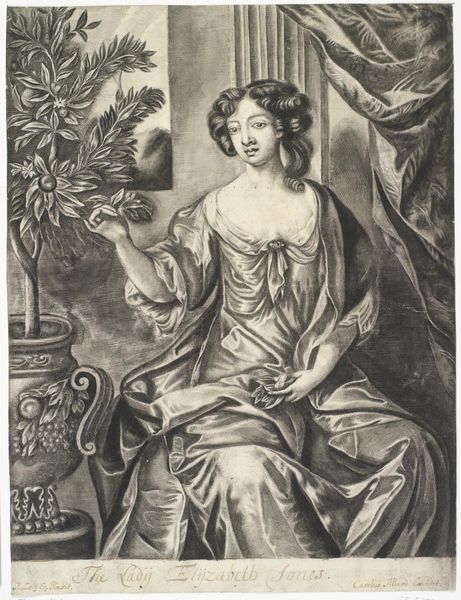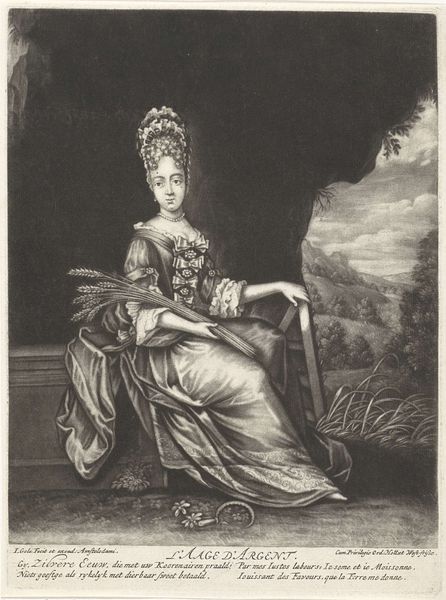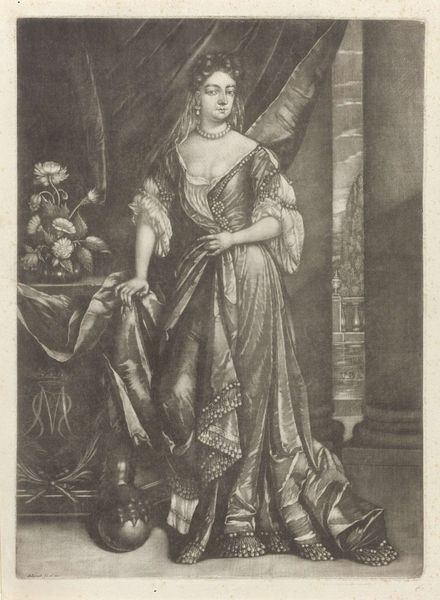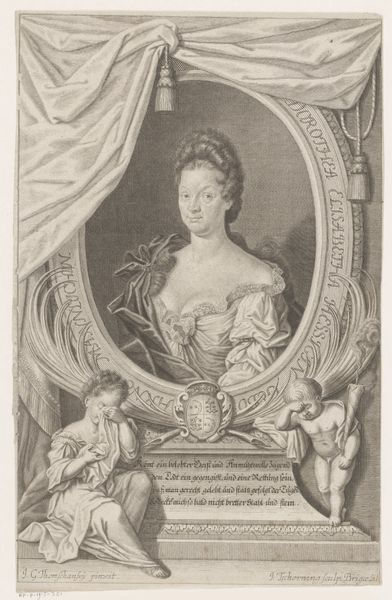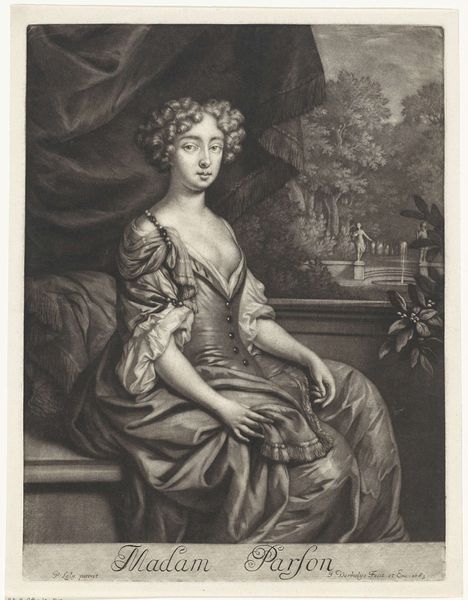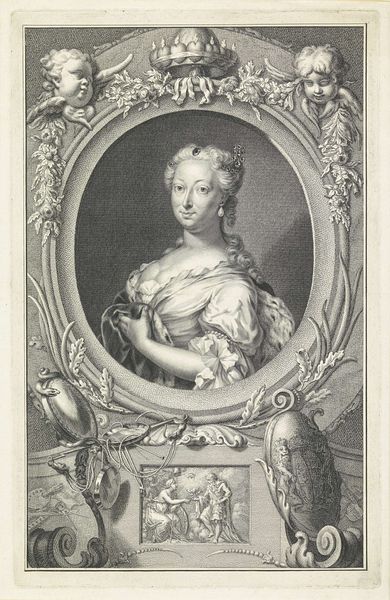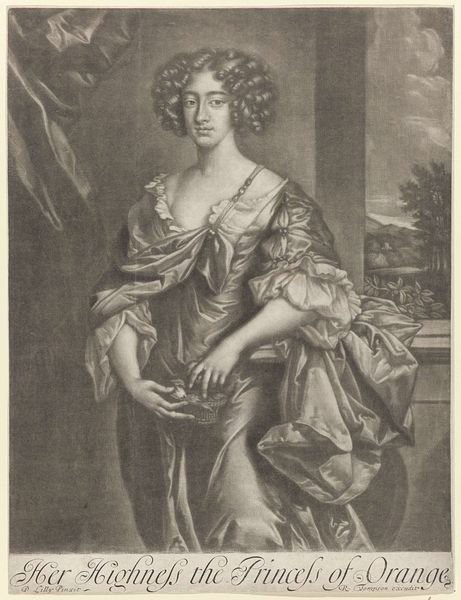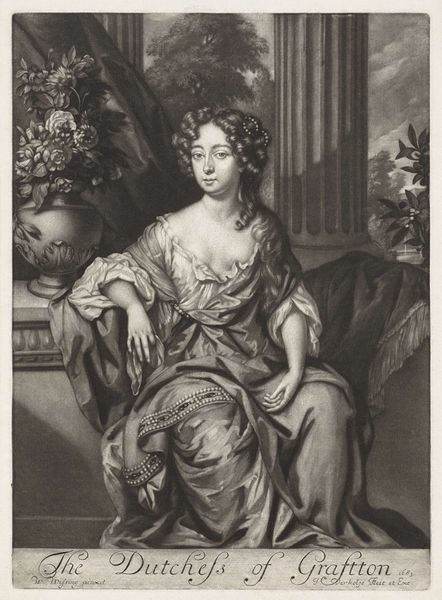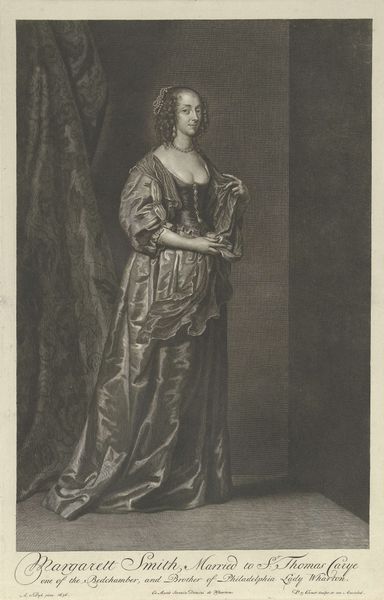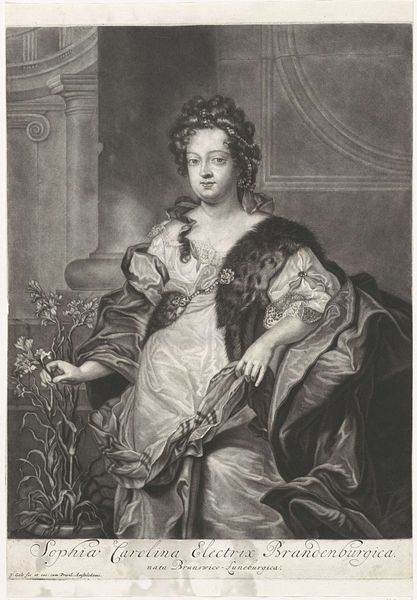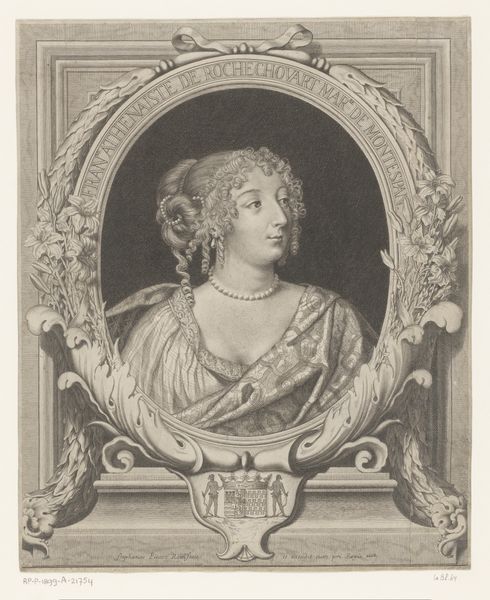
engraving
#
portrait
#
baroque
#
history-painting
#
engraving
Dimensions: height 386 mm, width 257 mm
Copyright: Rijks Museum: Open Domain
Curator: The engraving before us, dating back to somewhere between 1688 and 1698, immortalizes Louise de Kéroualle, Duchess of Portsmouth. I find the artist, whose identity sadly escapes us, really captures her… I don’t know, essence isn’t quite right, but the almost uncomfortable tension between grandeur and something more vulnerable. What springs to your mind when you look at it? Editor: It's undeniably sumptuous, almost dripping with… calculated languor. Her gaze doesn’t quite meet ours, does it? There’s a carefully cultivated aura of remoteness. The fabric seems to pulse with reflected light, practically a second skin, which to me speaks of constructed identity and societal expectation. The whole composition screams baroque art: dynamic yet staged. It feels more like an act of symbolic power play than a likeness, wouldn't you agree? Curator: Precisely! And that calculated-ness hints, I think, at the very specific position Louise held as a mistress of Charles II. Everything about the visual language in here—from the drape of the curtains to the deliberate placement of the crown on that velvet pillow—speaks to that intricate dance of power and vulnerability. The columns! It's almost as if she were being held inside of one. It brings about mixed feelings inside of me when I think about it... I like the painting and her look but at the same time, I don't appreciate that role. It's confusing and that is what holds my eye, Editor: Ah, the column: the eternal symbol of power and permanence. Even the tassels hanging on the robe feel weighted with implied rank. Yet there is an intimacy with the softness of her features and overall softness of the lighting, so, like you said, all these contradicting messages... And speaking of symbolic gestures—that crown isn’t actually on her head, is it? She doesn’t need to wear it: it’s presented to her, a tangible display of her influence. Her position might be unorthodox, even precarious, but she’s nonetheless deeply enmeshed in royal power. Curator: You're absolutely right. The image becomes an emblem of the complex reality of women in positions of influence. The engraving captures that duality beautifully. I keep noticing how this historical portrayal forces us to reconsider our presumptions about the era. Editor: Indeed. The engraving preserves not just an image but a visual archive of intertwined power and personal history. There is such weight to everything we see when put together. It does urge us to question, ponder and re-imagine history and the world that it was.
Comments
No comments
Be the first to comment and join the conversation on the ultimate creative platform.
